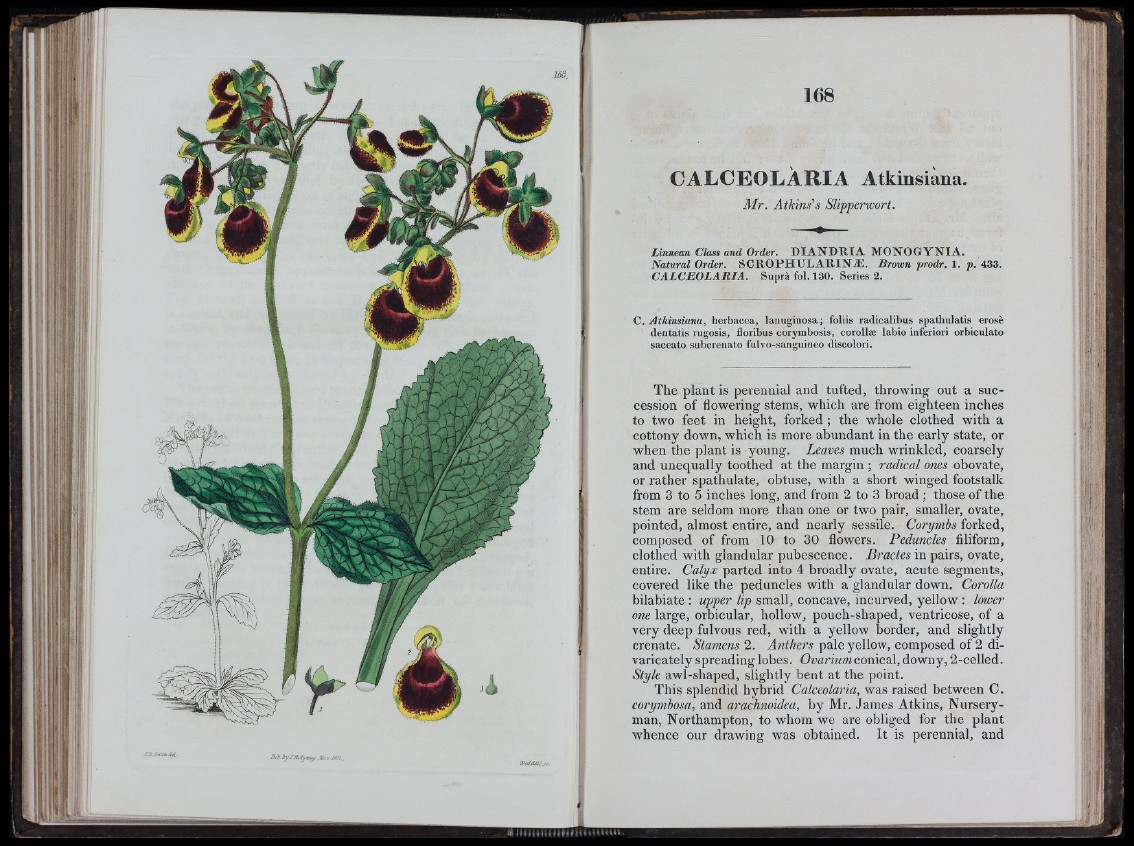
CALCEOLARIA Atkinsiana.
M r . Atkins’s Slipperwort.
Linnean Class and Order. M A N D R I A M O N O G Y N IA .
Natural Order. S C R O P H U L A R IN A !. Brown prodr. 1. p . 433.
C A L C E O L A R IA . Suprà fol. 130. Series 2.
C. Atkinsiana, herbácea, lanuginosa; foliis radicalibus spathulatis erose
dentatis rugosis, floribus corymbosis, corollæ labio inferiori orbiculato
saceato suborenato fulvo-sanguineo discolori.
The plant is perennial and tufted, throwing out a succession
of flowering stems, which are from eighteen inches
to two feet in height, forked ; the whole clothed with a
cottony down, which is more abundant in the early state, or
when the plant is young. Leaves much wrinkled, coarsely
and unequally toothed at the margin ; radical ones obovate,
or rather spathulate, obtuse, with a short winged footstalk
from 3 to 5 inches long, and from 2 to 3 broad ; those of the
stem are seldom more than one or two pair, smaller, ovate,
pointed, almost entire, and nearly sessile. Corymbs forked,
composed of from 10 to 30 flowers. Peduncles filiform,
clothed with glandular pubescence. Bractes in pairs, ovate,
entire. Calyx parted into 4 broadly ovate, acute segments,
covered like the peduncles with a glandular down. Corolla
bilabiate : upper lip small, concave, incurved, yellow : lower
one large, orbicular, hollow, pouch-shaped, ventricose, of a
very deep fulvous red, with a yellow border, and slightly
crenate. Stamens 2. Anthers pale yellow, composed of 2 divaricately
spreading lobes. Ovarium conical, downy, 2-celled.
Style awl-shaped, slightly bent at the point.
This splendid hybrid Calceolaria, was raised between C.
corymbosa, and arachnoidea, by Mr. James Atkins, Nurseryman,
Northampton, to whom we are obliged for the plant
whence our drawing was obtained. It is perennial, and
’■ ‘ 1
f l
hIi'